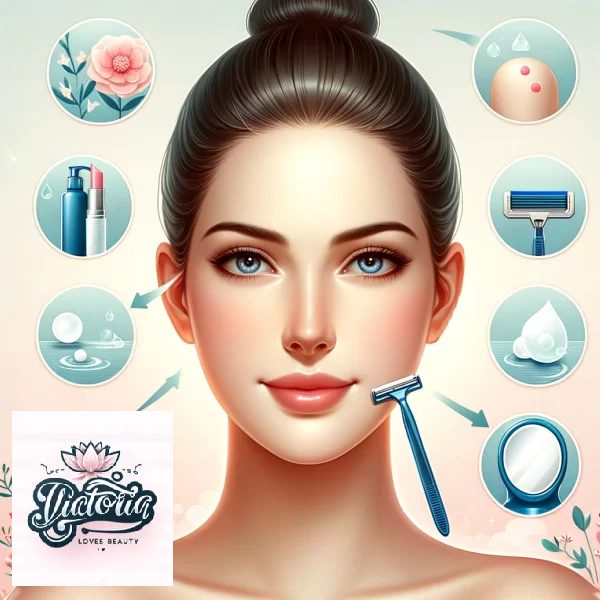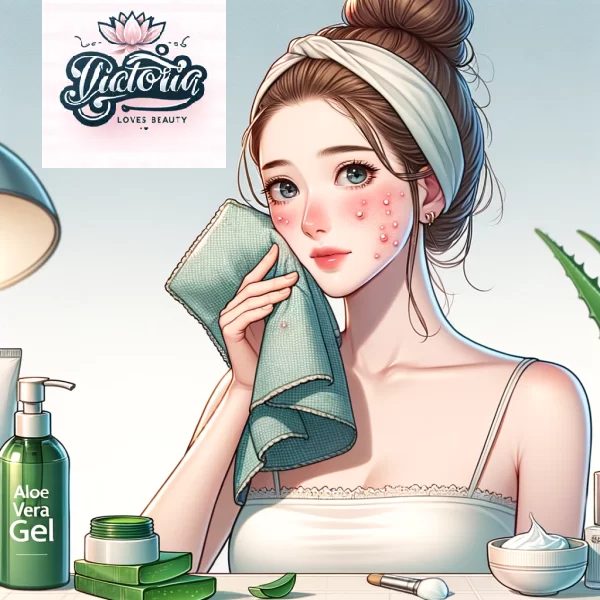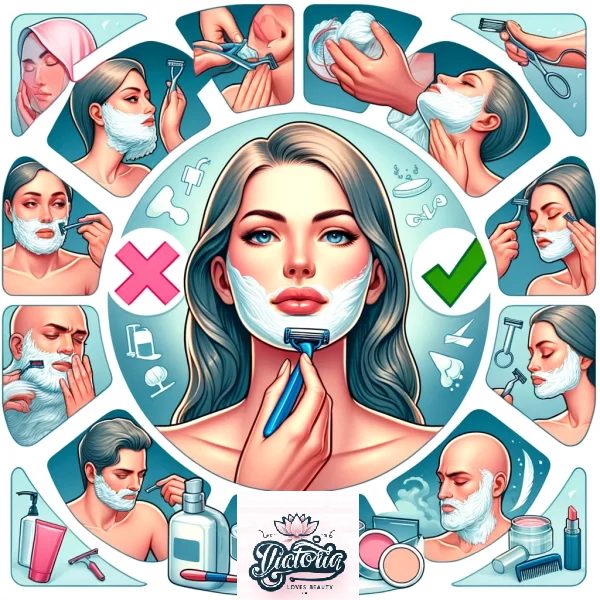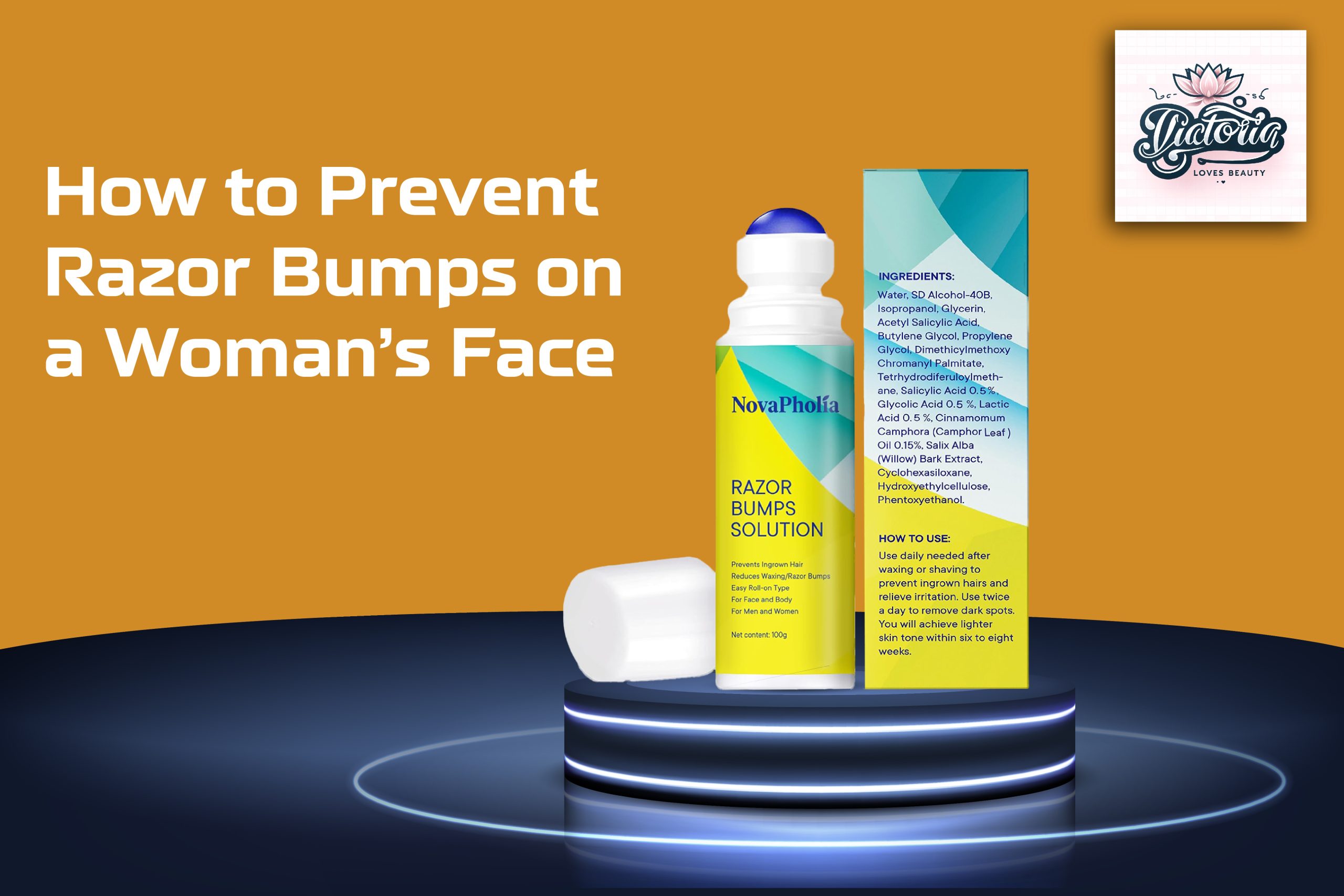A frequent obstacle many women face while trying to achieve flawless skin is razor bumps, technically known as pseudofolliculitis barbae. These annoying little pimples form on the skin after shaving and cause irritation. They can cause extreme discomfort, which is frequently accompanied by agony, especially for women who are apprehensive about shaving their faces. A smoother, more pleasant shaving experience awaits you when you wave goodbye to your post-shave problems.
Understanding Razor Bumps:
Razor bumps occur after shaving, where the cut hair redirects its path beneath the skin’s surface instead of growing outward. Although anybody can have them, those with curly hair are more likely to get them. Although those with curly hair are more likely to experience this because of the hair’s innate desire to coil back into the follicle, it can afflict anybody with any hair. The end effect is a rash of red, inflamed pimples on the skin’s surface, known as razor bumps. To avoid and treat these unwanted skin responses, it is essential to comprehend this mechanism.
Reaction on Different Skin Types
Our skin types are as varied as we are, and knowing how they respond to shaving is essential to developing a customized strategy to avoid and treat razor bumps. The reactions of different skin types are broken down as follows:
- Sensitive Skin: Skin sensitive to other things may become more irritated and red after shaving. To reduce the possibility of adverse reactions, use shaving products that are hypoallergenic and fragrance-free.
- Dry Skin: Razor bumps are more common on dry skin because of the lack of natural lubrication. To form a protective barrier, make pre-shave moisturization a priority. Select shaving creams that have additional moisturizing ingredients.
- Oily Skin: Although skin with extra oil can lead to blocked pores and acne, oily skin may be less sensitive to irritation. To balance oil production, use non-comedogenic shaving products and think about using an alcohol-free toner after shaving.
- Combination Skin: Addressing both dry and oily parts of the skin is crucial for those with combined skin. Use products designed for both skin types when customizing your shaving routine, and modify it according to areas of concern.
- Standard Skin Type: Even those with regular skin might benefit from a comprehensive shaving regimen. Select products that preserve the skin’s equilibrium without exacerbating excessive dryness or oiliness.
Knowing your skin type will help you choose the appropriate products and tailor your shaving technique to reduce the chance of razor bumps. To make well-informed decisions that support a smoother, irritation-free shaving experience, remember to conduct patch tests with new products and see how your skin reacts.
Prevention is Key
Preventive effort is the key to guaranteeing a smooth and irritation-free shaving experience. The following habits will help you maintain better skin and significantly lower your chance of getting razor bumps:
- Use a Sharp Razor: Ensure the razor is sharp each time you shave. In addition to giving an ineffective shave, dull blades can cause more pulling and discomfort, which increases the risk of razor bumps.
- Prepare Your Skin: Make skin care a priority before every shave. Warm water helps to soften skin by relaxing hair follicles and opening pores. A moisturizing shave gel also forms a protective barrier, which lowers friction and keeps the razor from skipping over the skin.

- Shave in the Direction of Hair Growth: Refrain from shaving against your hair’s growth direction. Doing this risks razor bumps and irritation from hairs growing back into the skin. To get a close shave without running the danger of ingrown hairs, go with the direction that hair grows naturally.
- Avoid extending the Skin: In contrast to widespread assumption, extending the skin makes shaving more difficult. Ingrown hairs can be encouraged by pulling or straining the skin, which can cause the hair to snap back beneath the skin’s surface. For best effects, shave with your skin looking natural and relaxed.
Choosing the Right Products
Making the right shaving product choices is essential to avoiding razor bumps and guaranteeing a comfortable session. When selecting shaving cream and razors, take into account the following factors:
Shaving Cream:
- Formulas for Hydration: Choose shaving products that are nourishing and hydrating. These mixtures lessen friction and the likelihood of irritation by forming a protective layer on the skin.
- Options Free of Fragrances: Consider using fragrance-free shaving products to prevent specific allergens that might cause skin responses if you have sensitive skin.
- All-natural Ingredients: Seek for items with organic components such as tea tree oil, chamomile, or aloe Vera. The skin may benefit from these substances’ calming and anti-inflammatory qualities.
Razors:
- Sharp Blades: Always use razors with sharp blades to guarantee a close, even shave. In addition to irritating the hair and raising the possibility of razor bumps, dull blades can pull at it.
- Single-Blade Safety Razors: Consider using a single-blade safety razor if you have sensitive skin. Comparing these razors to multi-blade razors, the tighter shave and lower risk of ingrown hairs are offered.
- Disposable Razors: Although handy, disposable razors must be changed frequently to stay sharp. The skin may suffer if a dull disposable razor is used.
Electric Shavers:
- Appropriate for Sensitive Skin: Electric razors frequently irritate skin less than traditional razors so they might be an excellent choice for sensitive skin.
- Continual Upkeep: For best results, keep electric razors clean and well-maintained.
After-Shave Products:
- Alcohol-Free Toners: To prevent drying out your skin, use toners without alcohol. Toners can help calm any possible irritation and assist the skin’s pH equilibrium return.
- Hydration: After shaving, use a light moisturizer without any scent to replenish the skin. Redness and razor bumps are less common in skin that is well-hydrated.
Soothing Existing Razor Bumps

When razor bumps have already appeared, providing immediate relief and promoting healing becomes crucial. Here are effective ways to soothe existing razor bumps:
- Cold Compress: Applying a cold compress is a quick and effective way to reduce inflammation. The cold helps constrict blood vessels, minimizing swelling and providing instant relief. Gently press the cold compress against the affected area for several minutes.
- Aloe Vera: Renowned for its healing properties, aloe Vera is a natural remedy that can effectively calm and soothe irritated skin. Apply pure aloe Vera gel directly to the razor bump-affected areas. The cooling sensation of aloe Vera provides comfort while promoting healing.
- Over-the-counter remedies: Look for products containing ingredients such as salicylic acid, glycolic acid, or witch hazel. These components serve as exfoliants, helping to remove dead skin cells and free trapped hairs. Apply the product according to the manufacturer’s instructions for optimal results.
- Moisturize: Keeping the affected skin well-hydrated is crucial for reducing irritation and promoting healing. Choose a fragrance-free moisturizer with soothing ingredients to prevent further aggravation. Apply the moisturizer gently to avoid unnecessary friction on the razor bump areas.
Proper Shaving Technique:
Preparation:
-
- Soften the skin with warm water.
- Consider shaving during or after a warm shower.
Shaving Direction:
-
- Shave in the direction of hair growth to prevent ingrown hairs.
- Avoid shaving against the grain.
Pressure and Strokes:
-
- Use light pressure and let the razor’s weight do the work.
- Employ short, controlled strokes for precision.
Rinse Frequently:
-
- Rinse the razor often to remove hair and cream buildup.
Post-Shave Care:
-
- Rinse with cold water to close pores.
- Apply an alcohol-free toner and moisturizer for soothing.
Avoid Over-Shaving:
-
- Resist the urge to over-shave or go over the same area too often.
Avoiding Common Mistakes:
In addition to using the proper methods, avoiding common blunders that might harm your skin is essential to getting a smooth, irritation-free shave. Here’s a list of things not to do:
- Using Dull Blades: A sharp razor should always be used. In addition to causing pulling and discomfort, dull blades raise the possibility of razor bumps.
- Ignoring Skin Preparation: Shaving can become more harsh and irritate the skin if the skin is not softened with warm water beforehand.
- Ignoring Razor Hygiene: If you don’t regularly clean and maintain your razor, germs may build up and cause infections and skin problems.
- Shaving Against the Grain: Shaving in the opposite direction of hair development increases the chance of razor bumps and ingrown hairs. Shave in the direction that hair grows at all times.
- Excessive Pressure: Excessive pressure when shaving can lead to cuts, nicks, and discomfort. Utilize light and deliberate strokes, letting the weight of the blade do the heavy lifting.
- Over-Shaving: Excessive shaving, especially in the same region, can irritate the skin. Allow your skin a chance to heal in between shaves.
- Ignoring Post-Shave Care: If post-shave care is neglected, the skin becomes more prone to irritation and dryness. Post-shave care includes washing with cold water, toner, and moisturizer.
- Applying Harsh Products: Steer clear of applying products that include strong chemicals or perfumes, as they may aggravate skin sensitivity and cause unfavorable responses.
- Tweezing: Refrain from using tweezing to remove hair. Tweezing can cause skin irritation and raise the chance of ingrown hairs considerably. Choose kinder ways to get rid of hair to avoid causing discomfort.

When to Seek Medical Attention?
While most instances of razor bumps can be effectively managed with proper care and prevention strategies, there are situations where seeking medical attention is advisable. Here are scenarios that warrant a visit to a healthcare professional:
- Persistent Inflammation: If razor bumps persist or worsen despite following recommended care routines, it’s essential to consult a dermatologist. Prolonged inflammation may indicate an underlying skin condition that requires specialized treatment.
- Signs of Infection: If you notice signs of infection such as increased redness, swelling, warmth, or the presence of pus, seek medical attention promptly. Infections can occur if bacteria enter irritated hair follicles.
- Severe Pain or Discomfort: Intense pain or discomfort associated with razor bumps may suggest an infection or an allergic reaction. A healthcare professional can assess the situation and prescribe appropriate medications for pain relief or treatment.
- Development of Cysts or Boils: Medical attention is necessary if razor bumps evolve into painful cysts or boils. These could be signs of a more significant issue that requires professional intervention.
- Excessive Scarring: If you notice persistent scarring or changes in skin pigmentation due to recurrent razor bumps, a dermatologist can guide scar management and potential treatment options.
- Allergic Reactions: In severe allergic reactions to shaving products, characterized by symptoms such as widespread itching, swelling, or difficulty breathing, seek immediate medical attention. Allergic reactions can be severe and require prompt intervention.
Professional Treatments:
Seeking professional treatments may provide longer-lasting remedies if razor bumps remain a problem. Laser hair removal is an excellent alternative for those prone to razor bumps since it targets hair follicles, resulting in a more permanent reduction in hair growth. This gets to the bottom of the problem and reduces the chance of ingrown hairs. Furthermore, chemical peels performed by a dermatologist offer a therapeutic method of skin exfoliation that helps free stuck-in hairs and stops future issues. These expert therapies offer focused interventions for individuals looking for a thorough and long-term solution to the problems presented by recurring razor bumps, going beyond traditional cures.
Final Thoughts
- Stay Gentle: Remember, your skin needs tender care. Avoid aggressive rubbing and use soft, soothing motions when applying products.
- Hydration is Key: Keep your skin moisturized. Hydrated skin is less prone to irritation and heals faster.
- Choose the Right Products: Opt for products specifically designed for sensitive skin or razor bumps. Look for keywords like ‘soothing,’ ‘anti-inflammatory,’ and ‘non-comedogenic.’
- Cold Compress for Immediate Relief: A cold compress can reduce swelling and redness quickly. It’s a simple yet effective remedy.
- Avoid Re-irritation: Give your skin a break. Avoid shaving the affected area until it has fully healed.
- Natural Remedies Work Too: Ingredients like aloe Vera and tea tree oil can be gentle, natural alternatives for soothing skin.
- Consult a Professional: If razor bumps persist or worsen, it’s wise to consult a dermatologist. They can provide personalized advice and treatment options.
- Prevention is Better Than Cure: Remember that the best way to deal with razor bumps is to prevent them. Use proper shaving techniques, sharp razors, and aids to minimize the risk.

Beauty enthusiast, mom on-the-go, and coffee addict (not necessarily in that order!). When she’s not chasing after her adorable toddler, Victoria is busy researching the latest beauty trends, testing out products, and sharing her discoveries with the world. Join her on this journey of self-care, empowerment, and finding your own unique spark of beauty!
